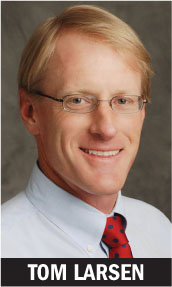 The accumulation of data and theusage of that data in catastrophe modeling is a delicatebusiness.
The accumulation of data and theusage of that data in catastrophe modeling is a delicatebusiness.
Tom Larsen, senior vice president of catastrophe-risk modelerEQECAT Inc., says the firmstrives to be on the leading edge and does so with continuousadaptations to models—in order to avoid becoming too disruptivewith wholesale changes.
|"You don't want to release something and say, 'Last year we toldyou to go left. Now we want you to go right,'" he tellsNU.
|WORLDCATenterprise, the firm's current catastrophe-risk-modelingsoftware platform, includes 181 natural-hazard models for 95countries and territories spanning six continents.
|This spring EQECAT is updating its catastrophe-modeling platformto meet the demand for more complete models, especially followingevents in 2011—like the earthquake and tsunami in Japan, as well asflooding in Thailand—which were not consistently modeled.
|"Our clients seek more and better data for policy forms todifferentiate between policies on a more granular level," saysLarsen. "It is our job to keep up to date with the latest scienceand prioritize with clients in order to help them get an accurateperspective of their risk."
|The new platform is meant to better assist all decisions in theunderwriting workflow of insurance.
|Larsen says EQECAT incrementally updates its models instead ofwaiting for data from a single, large, claims-generating event toadjust.
|Consider the type of destructive weather events in 2011 and howthey changed the predictive-modeling spectrum. From a betterunderstanding of insurance layers in countries like Japan and NewZealand to the distinctive characteristics and random areas ofdifferent damages caused by Hurricane Irene in the U.S., modelerswere overloaded with additional data to meld into their imperfectproducts.
|Irene alone presented several unique challenges, notes Larsen.For a large, major hurricane there is less uncertainty. It iseasier to predict the impact and damage from a Category 5 hurricanethan from Irene, which wasn't a particularly strong storm but onethat caused damage to a large swath of the East Coast. The floodingfrom Irene was also a learning experience, he adds, because itactually made the wind losses higher since claims adjusterscouldn't get to the scene as fast as they would have liked.
|Since the landscape is always changing, the data set isperpetually evolving, presenting modelers with excess opportunitiesfor improvement.
|Calculations for flood losses, for example, change "every timesomeone paves a parking lot or cuts down a forest," says Larsen,who adds 2011 also presented modelers with more understanding ofthe relationship between flooding and saturated ground.
|Research on climate change is also informing models, Larsenadds.
|Modelers "can't eliminate all uncertainty," he admits, butclients and investors demand a sense of the losses following asignificant event.
|"After an event you can see stock prices based on whisperedloss-projection numbers," Larsen says. "Understanding these eventsis a necessary component of international commerce. We arecompelled to come up with an estimate."
|Additionally, ratings agencies and regulators are relying onmodels to give them a better understanding of an insurers'exposure, reserving and solvency. It is a use of modeling that isbecoming more important with recent international solvencyrequirements being implemented.
|"There are a lot of pressures [on insurers]," Larsen says. "Thisis what is driving the demand."
Want to continue reading?
Become a Free PropertyCasualty360 Digital Reader
Your access to unlimited PropertyCasualty360 content isn’t changing.
Once you are an ALM digital member, you’ll receive:
- All PropertyCasualty360.com news coverage, best practices, and in-depth analysis.
- Educational webcasts, resources from industry leaders, and informative newsletters.
- Other award-winning websites including BenefitsPRO.com and ThinkAdvisor.com.
Already have an account? Sign In
© 2024 ALM Global, LLC, All Rights Reserved. Request academic re-use from www.copyright.com. All other uses, submit a request to [email protected]. For more information visit Asset & Logo Licensing.








